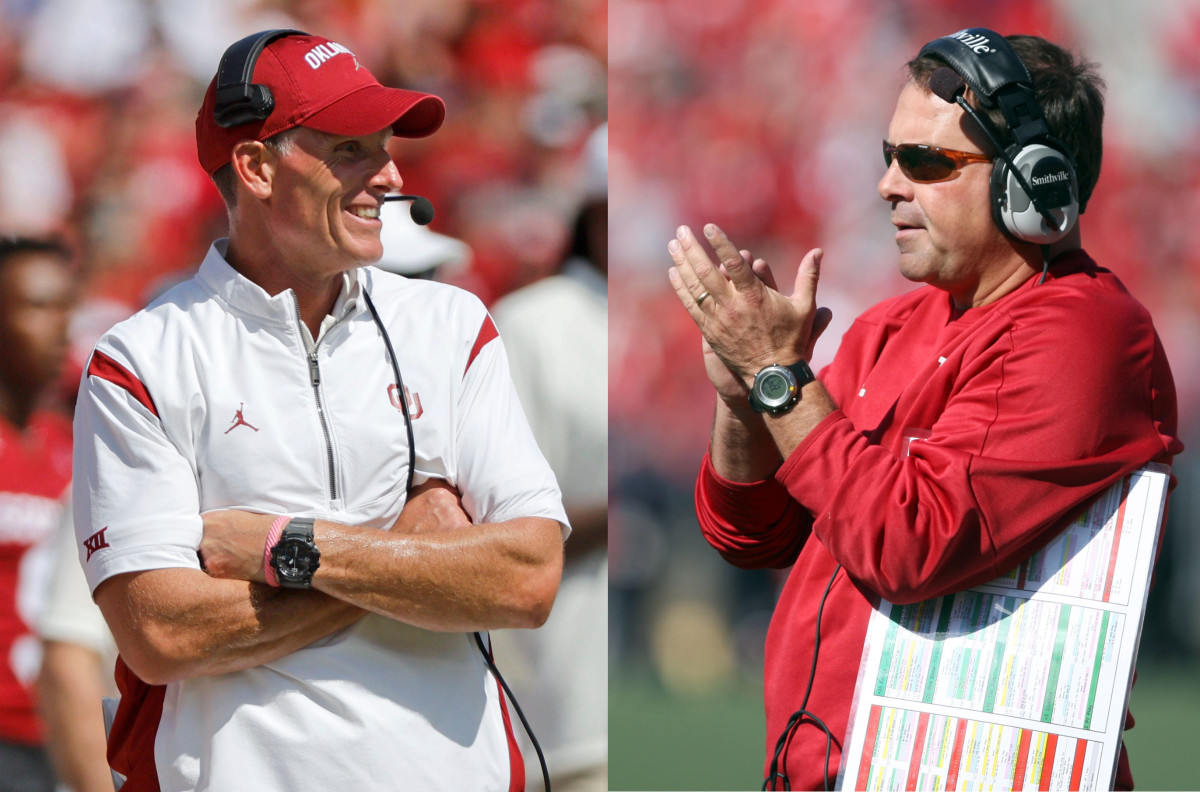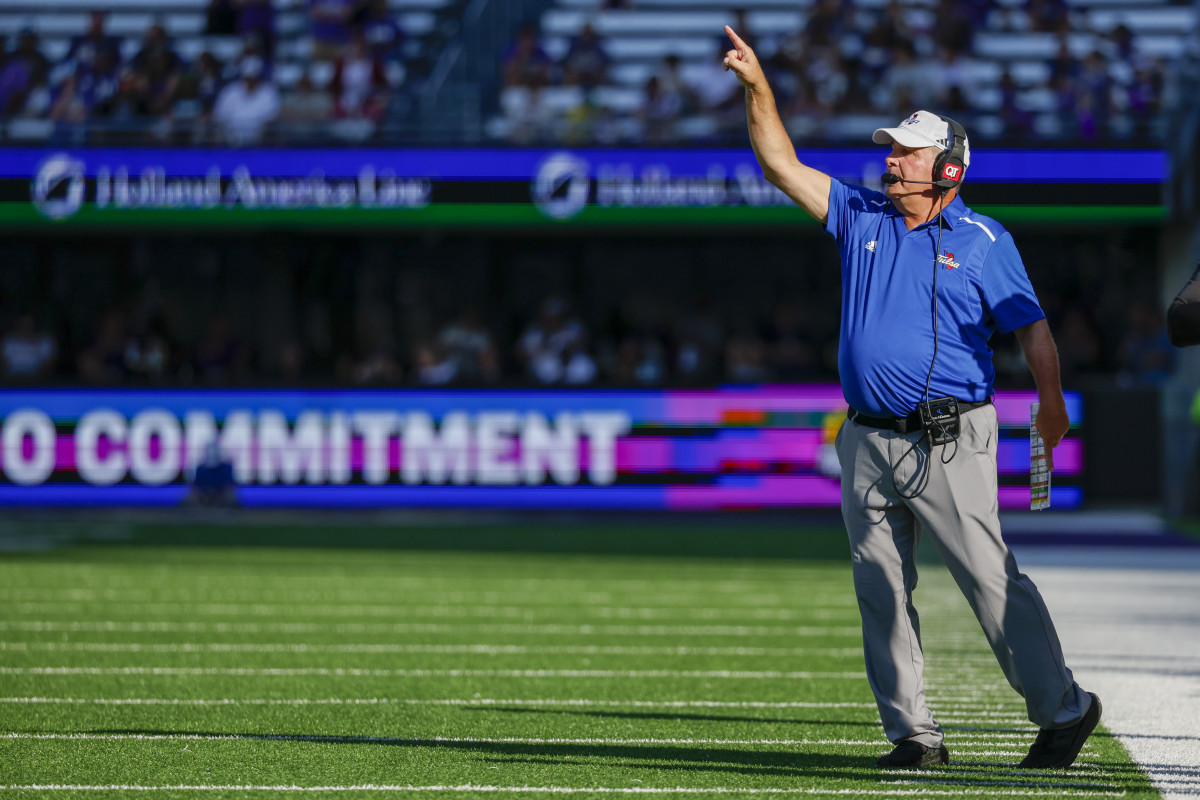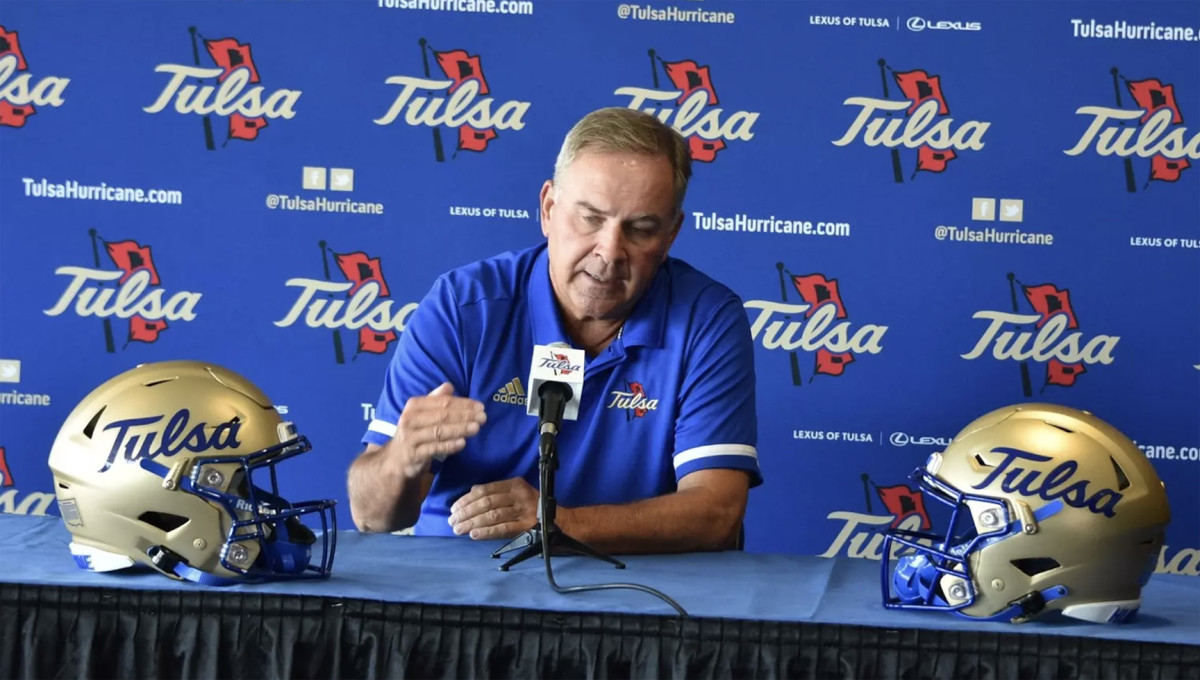Why Oklahoma Coach Brent Venables Will Be Wary of Tulsa's Head Coach This Week
NORMAN — Brent Venables has a closer, more personal relationship with this week’s opposing head coach than he does most.
Kevin Wilson was Oklahoma’s offensive coordinator for most of Venables’ 13 seasons as OU’s defensive coordinator or co-coordinator.
As one might imagine, there were some intense battles on the practice field.
“I mean, the battles were what they were: in the moment, it’s personal,” Venables said. “You’re trying to win. At least that’s the goal."
At his weekly press conference later in the day on Tuesday, Wilson expounded on that thought — and disagreed slightly.
“Practice was competitive. Practice was hard,“ Wilson said. “But practice was never personal. You were trying everything you could."
“That’s what it’s about, man,“ Venables added. “The practice field is how you become a good player, good unit, good team.”
Venables and Wilson had some good units on some very good OU teams.
They coached together — or, more often, on opposite sides — on Bob Stoops’ Oklahoma staff for nine years from 2002-10. Stoops hired Wilson from Northwestern to replace Mark Mangino as offensive line coach after Mangino left to take over at Kansas.
Wilson was promoted to offensive coordinator for the Holiday Bowl in 2005 when Chuck Long took the reins at San Diego State, and the OU offense — record-setting under Long — became almost unstoppable under Wilson.

Wilson left for the head coaching job at Indiana following the 2010 season. He most recently was offensive coordinator at Ohio State before taking the Tulsa job last winter.
During his weekly news conference on Tuesday, Venables described his counterpart as “very competitive. He’s really a smart coach and a tough guy.
“Both of us very passionate about our craft. And Kevin’s done a great job wherever he's been, if he's just coaching the tight ends or he's coaching the quarterbacks or whether he's at Northwestern or Oklahoma or Indiana or Ohio State now Tulsa, he's always done a fantastic job.
“He's one of my favorite people that I've worked with and a good friend and a great dad and a great husband and a dang good football coach. And Tulsa’s lucky to have him.”
Wilson also took a stab at describing Venables and their time together at OU.
“Phenomenal time,“ Wilson said. "He’s a great coach. A passionate coach. Right now, he’s in a room with some players and he’s got a grease board with a thousand lines all over it and you can’t see anything. But he’s blowing up and stopping plays, because that’s what he does. And he does it as well as anybody.“
Wilson is actually one of the architects of the modern proliferation of the hurry-up offense.
In 2007, the Sooners were explosive and dynamic. Quarterback Sam Bradford set multiple NCAA freshman records after redshirting in 2006.
But in 2008, Wilson installed a new version of the hurry-up, no-huddle offense, and the OU offense shattered multiple NCAA records. Wilson’s squad scored at least 50 points nine times, hit 60 points five straight times and set an all-time FBS record with 714 points as Bradford threw 50 touchdown passes and won the Heisman.

That OU team took what had been a largely situational offense — a 2-minute drill at the end of a half, or a quick change-of-pace — or, as many more traditional coaches held at the time, a “junk” offense, popularized by zany WAC teams or teams that had a significant talent disadvantage — and populated it with future NFL Draft picks.
And ran it every possession.
“Kevin had a background at Northwestern with Randy Walker,” Venables said. “And all the success, we remember that was always a feel good story, you know, the David versus Goliath. Seemed like every time Northwestern was playing, they were taking somebody to the wire or beating one of the blue bloods of college football.”
Wilson eventually brought that up-tempo scheme out at OU, but it was gradual, Venables said.
“Somebody that was never afraid to try something new,” Venables said.
Venables on Tuesday recounted his involvement in Wilson’s installation of the no-huddle. Stoops knew it would have an adverse affect on the Sooner defense — with more tempo means more plays and more possessions, for both the offense and the defense — so Stoops ran it by his defensive coordinator.
“I just happened to be in the general area code,” Venables said this week.
“He and Coach Stoops and the other offensive coaches decided, ‘Hey look, some of these people were doing a few of these ‘fastball’ plays. You had a package of two or three ‘fastball’ plays — you put three people into the boundary and you run a toss sweep, and then maybe you'd run a fake toss and a double post-wheel, and maybe you throw a fade route or slant or something to the to the field — you know, a fastball package. So you got a fastball defense.

“Well, they took it to another level — and it wasn't a bunch of quick, short throws. I remember specifically Coach Stoops said, ‘You need to go fast and run for verticals,’ because that really wasn't a popular thing to do.”
Instead of facing a limited up-tempo package, opponents were facing the full force of the Oklahoma offense running at hyper speed.
“I think they used the personnel and created all kinds of different formations out of the same personnel grouping, and really put defenses on their heels,” Venables said. “You couldn't do your (defensive) sub packages and things of that nature. So at the time, you know, it was a really a big-time challenge.
“And then you add to it the quality of the players that are involved. The accuracy of Sam Bradford and the weapons that he had on offense and their skill, whether it was Jermaine (Gresham), DeMarco (Murray), all these playmakers everywhere.
“But there's also great detail and precision and a lot of thought that was put into how we do what we do — and I was glad they were on our team. And but that was a lot of fun to watch that maturation and in some ways evolution of it. There's been tempo and no huddle for a very long time, well before that, but in the college football game, with what we're doing, the personnel that we were doing it with and the variety of the things, it wasn't just the run and shoot. It was a getting in I-backs with the same personnel and then they can get empty (backfield) and just blister you with whatever they were doing.”
The tempo game quickly went nationwide, so everyone did it — but now, it’s actually gone out of vogue as defenses have adjusted and caught up. Now teams use tempo in more specific situations — like they used to.
Tulsa isn’t exclusively high-tempo, but Venables sees a lot of the same characteristics in the Golden Hurricane’s first two games that he used to see every day on the practice field.
“I see his his players playing aggressively and playing confidently,” Venables said. “Even watching going up to Washington, traveling halfway across the country, they played in a — very first third down of the game — they go first down, second down, third down conversion. You know, real fearless, and that's, you know, he's kind of got a go-for-broke mindset. So he'll do a great job there. And just players are representing him well right now.
“We had a lot of good times,” Venables said. “A lot of good times.”
- Sign up for your premium membership to AllSooners.com today, and get access to the entire Fan Nation premium network!
- Follow AllSooners on Twitter to stay up to date on all the latest OU news!
- Want even more Sooners news? Check out the SI.com OU team page here!
- Listen and subscribe to the AllSooners Podcast!
- Watch more Sooners videos and subscribe on YouTube!
